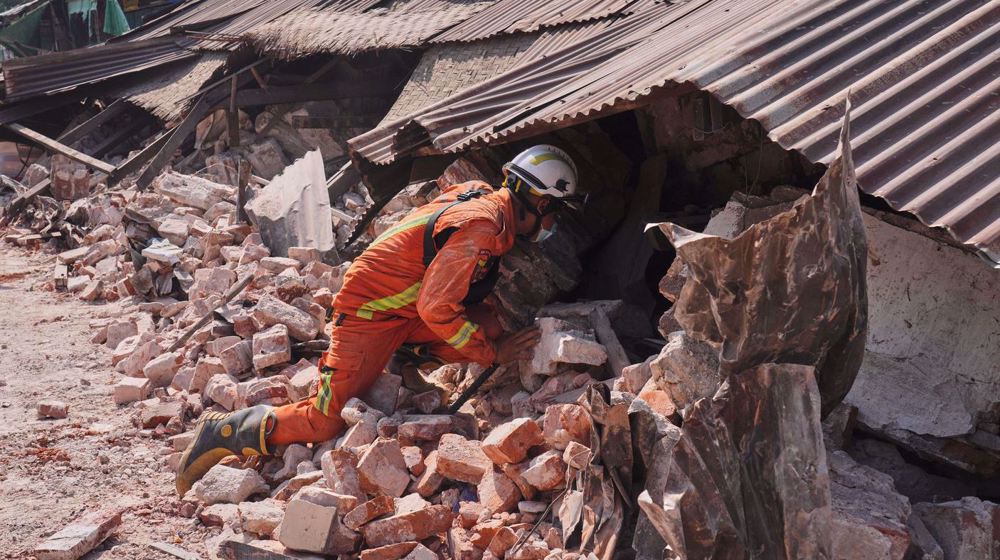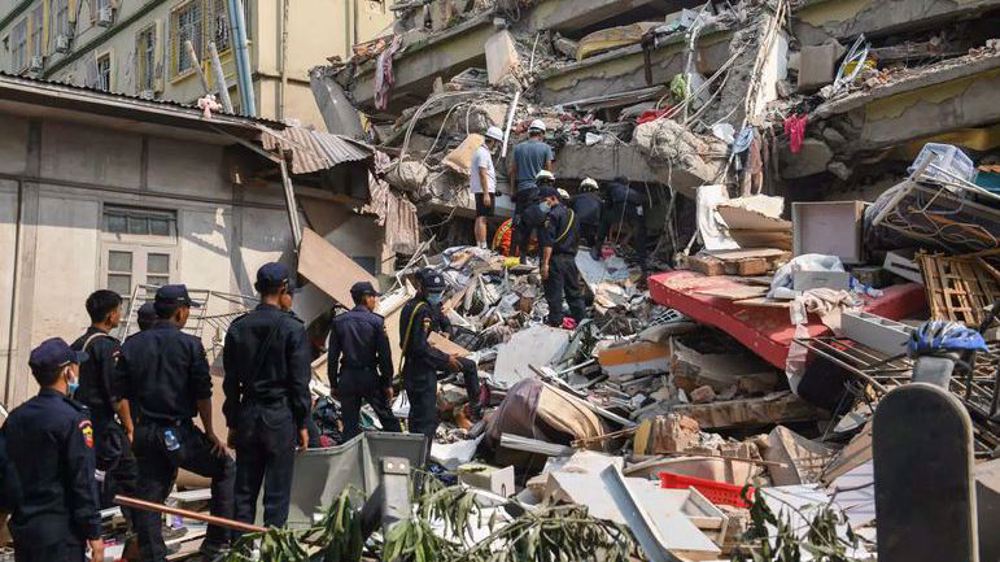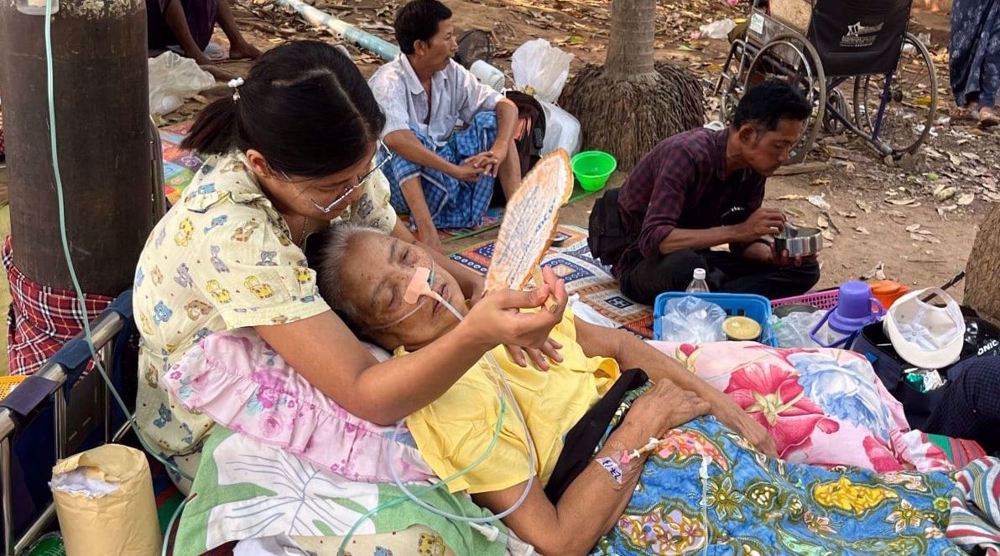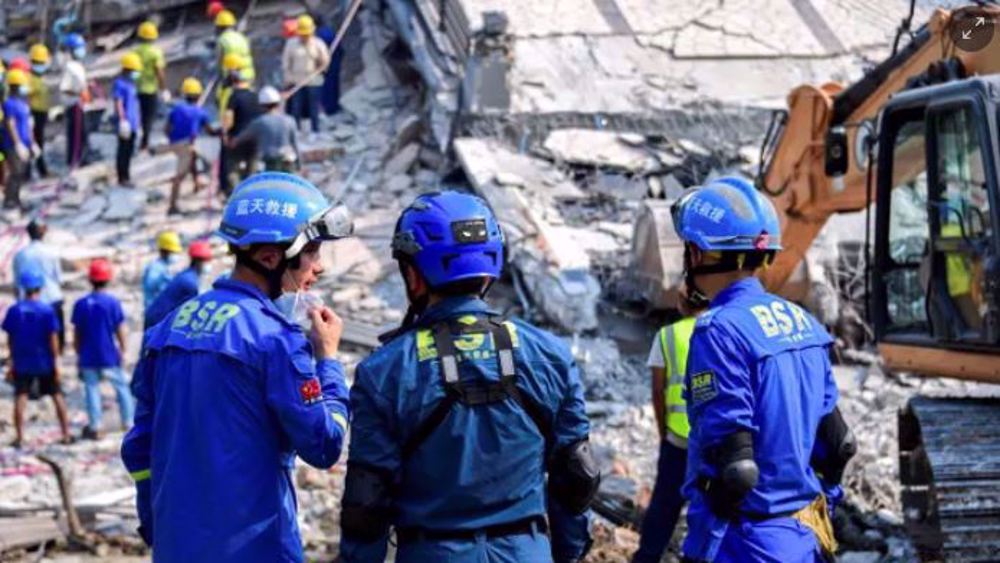WHO warns Myanmar quake ‘top-level emergency’, seeks urgent funding
The World Health Organization (WHO) has issued a flash appeal for $8 million of emergency support amid a frantic search for quake survivors in Myanmar.
A 7.7-magnitude quake hit Myanmar on March 28 followed by aftershocks.
A multitude of people died and the government declared a week of national mourning Monday.
The death toll passed 2,000 and hopes faded of finding more survivors in the rubble of ruined buildings.
More than 3,900 have also been injured and nearly 300 people remain missing.
At least 19 people were killed and scores more are injured and missing in neighboring Thailand.
The epicenter was recorded in Myanmar’s central Sagaing region, near the former royal capital Mandalay, home to around 1.5 million people, as well as multiple historic temple complexes and palaces.
Those at the epicenter of the quake are largely cut off following the collapse of a key bridge over the country’s Irrawaddy River, according to local officials.
On Sunday, WHO said, “The Myanmar quake has become a top-level emergency and to save the lives of the survivors of the quake, and to prevent a future outbreak of disease, $8 million of emergency funds are urgently needed to restore and maintain health requirements over the next few weeks.”
Hospitals are overwhelmed, WHO said, adding that the scale of casualties and destruction of infrastructure, the healthcare system and medical facilities “are not yet fully understood.”
Nearly 1,700 houses, 670 monasteries, 60 schools and three bridges are reported to be damaged, and there are concerns for the structural integrity of large dams, OCHA said. It also noted damage to hospitals, universities, and historical and public buildings.
The UN agency said the transfer of the survivors to overcrowded shelters, coupled with the damage done to the water systems and sanitation infrastructure, had sharply increased the risk of communicable diseases spreading across the population.
"WHO has classified this crisis as a Grade 3 emergency -- the highest level of activation under its Emergency Response Framework," the United Nations health agency said in its flash appeal for funds.
"Preliminary assessments indicate high numbers of casualties and trauma-related injuries, with urgent needs for emergency care. Electricity and water supplies remain disrupted, worsening access to health services and heightening risks of waterborne and food-borne disease outbreaks ... including cholera," the WHO said.
"Trauma-related injuries -- including fractures, open wounds, and crush syndrome -- are at high risk of infection and complications due to limited surgical capacity and inadequate infection prevention and control.
"Immediate health needs include trauma and surgical care, blood transfusion supplies, anesthetics, and essential medicines.
"Disease surveillance must be urgently strengthened to prevent outbreaks of cholera, dengue, and other communicable diseases," it warned.
The WHO said in addition to surgical equipment, multi-purpose tents were also needed to create more space for the increasing number of survivors.
It said the continuous supply of essential provisions and immunization kits, plus maternal and child health necessities, were also critical over the coming 30 days.
In this regard, Red Cross and Red Crescent have launched an appeal for more than $100 million to help quake victims.
An official from the International Federation of Red Cross and Red Crescent Societies (IFRC) said the scale of devastation wreaked on the country “hasn’t been seen in over a century in Asia.” A 7.9-magnitude earthquake had hit Taunggyi, a city in central Myanmar, in 1912.
Meantime, international aid and rescue teams have been pouring into the country.
Myanmar thanked major powers China, Russia and India for extending aid to the Southeast Asian nation.
In neighboring Thailand’s capital city Bangkok, rescue workers continue to dig through and clear the vast pile of rubble at the site of the collapsed building. Authorities say there is still hope of finding more survivors in the debris.
Already, 12 deaths have been confirmed while at least 75 people are still missing. The other fatalities were reported elsewhere in the capital, authorities said.
The first 72-hours after a quake are widely regarded as the “golden” window to reach victims buried alive under rubble - after that period the chances of survival without a water source diminishes rapidly.

Death toll from Myanmar quake rises to over 3,085

Iran voices readiness to help quake-stricken Myanmar, Thailand

Myanmar, Thailand declare state of emergency after quake
Columbia University laid groundwork for my abduction: Detained student
US threats contradict its calls for diplomacy, Iran open to talks on ‘equal footing’: President
Hamas says 19,000 children killed in Gaza, calls for prosecution of Israeli leaders
Lebanon calls on US to stop Israeli strikes, ceasefire violations
VIDEO | Footage reveals aid workers killed in Gaza under Israeli fire, debunking regime’s claims
Autopsy finds teenage Palestinian died of starvation in Israeli prison
Year of Investment in Production in Iran
Israel’s brutality in Gaza ‘surpasses all recent forms of terrorism’: Rights group







 This makes it easy to access the Press TV website
This makes it easy to access the Press TV website